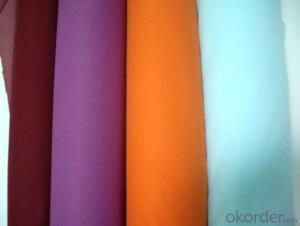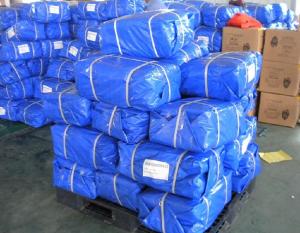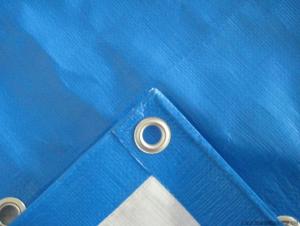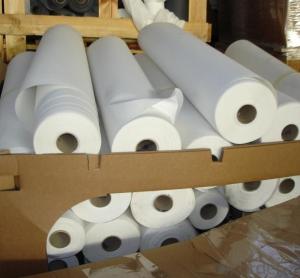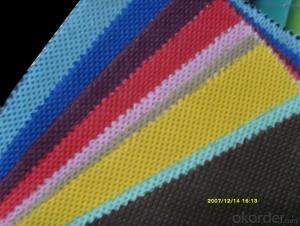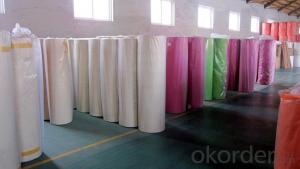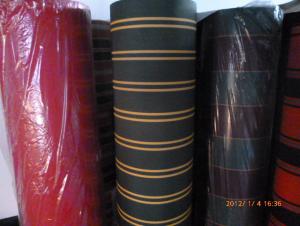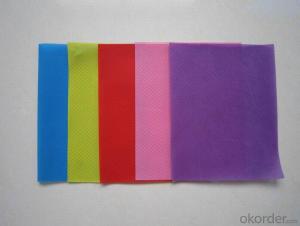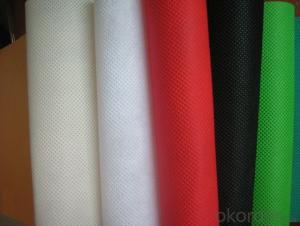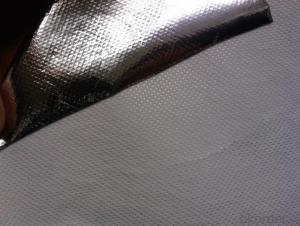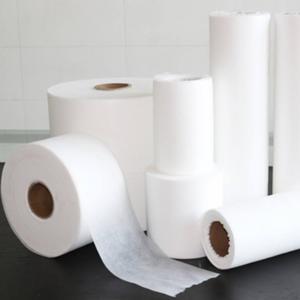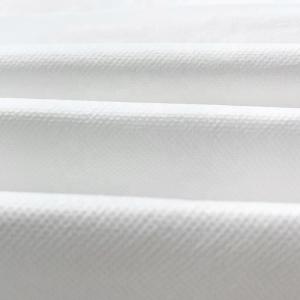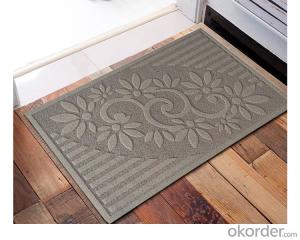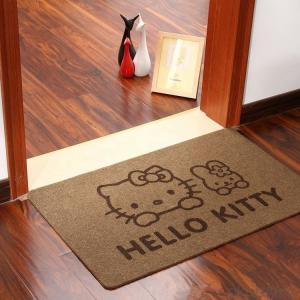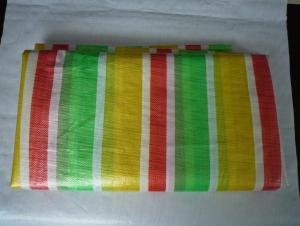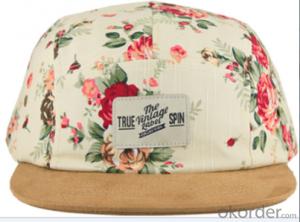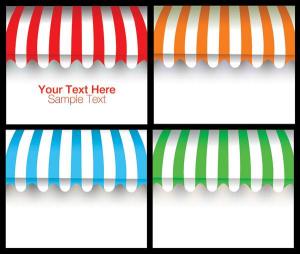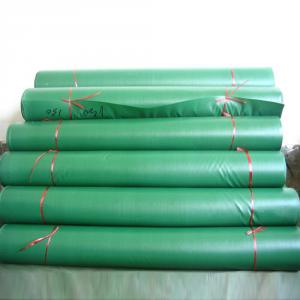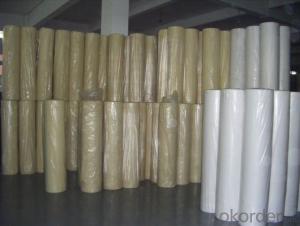polypropylene non woven fabric/Bubble Non woven Fabric roll/PP non woven fabric
- Loading Port:
- Shanghai
- Payment Terms:
- TT OR LC
- Min Order Qty:
- 1000 roll
- Supply Capability:
- 10000 roll/month
OKorder Service Pledge
OKorder Financial Service
You Might Also Like
Specifications
Non woven fabric(chemical bond nonwoven,chemical fabric)
Non woven fabric
Fiber composition: 100% PET,or PET mix Viscose
Width: Below 88 inch(220cm)
Weight:20G-150G square meter
Hand feeling: Soft, Hard,Crisp etc
Color: White,Super white,Black color etc
Item No:2016S,2016H,1020H,1025H,1035H,1050H,1065H
Chemical Bonded Non-woven fabric made of 100% PET,PET mix Viscose material etc,weight from 20-150g/m,width below 220cm,do soft,hard,crisp hand feeling,have white,super white,Black color.The product are widely used for Chef hat material,Handicraft product,clothes interlining,Embroidery etc.
Non woven fabric(chemical bond nonwoven,chemical fabric)
Health - Hygiene & Medical
Surgical Gowns
Gloves
Face Masks
Foot covers
Diapers
Caps
Bedsheets
Curtains
Pillow Covers
Slippers
Packaging
Sleeping Bags
Tarpaulins
Tents
Artificial Leather
Bags for Rice/Sugar etc.
Luggage
Vacuum Cleaner Bags
Tea and Coffee Bags
Buff Pads
Shopping Bags
Agriculture
Crop Covers
Turf Protections
Nursery Over wintering
Weed Control Fabrics
Root Bags
Containers
Capillary Matting
Other types of covers
Furniture Upholstery
Roofing and Tile Underlayment
Acoustical Ceilings
Insulation
House wrap
Pipe wrap
Sofa and Mattress Lining
Shoes & Garments
Coveralls
Pillow cases
Airline Headrests
Interlinings
Clothing and Glove insulation
Bra and Shoulder Padding
ADVANTAGES:
1. Lower labour costs as no weeding maintenance for years;
2. Water seeps through and can conserve soil moisture for improved growing conditions;
3. Air escapes – humidity rises through the mat for a more controlled growing environment;
4. Increase crop yields close to 25% due to improved growing conditions and absence of water stress and competition of nutrients absorption from weeds;
5. Minimises bacteria and fungus problems especially Algae;
6. Strong, woven construction or pressed fibre sheet resists tears and punctures;
7. Resistant to mildew, rot, water, sunlight and most of the agricultural chemicals
8. Fertilizer is applied on the mat, thus helping the owner or estate manager to monitor the progress of manuring;
9. Prevents soil erosion or leaching of soil nutrients or fertilizers applied;
10. Environmental friendly.
FAQ:
Q .What is the material of the non woven fabric ?
A .PP spunbond non woven fabric
Grade A: 100% Polypropylene
Grade B: 90% Polypropylene +10% filling
Q .What about the width of the non woven fabric ?
A .We can cut the fabric as your requirement. Our width of machine is 240cm, so the max of the width is 240cm
Q .What about the color ?
A .Any color is available. You just need to give me the Panton Num or send me your sample. Then we will make the color samples to you for approve
Q .What about the GSM ?
A .The thinnest of the fabric that we can produce is 9g, and the thickest is 250g. Normally the fabric that used in bag making is 50-100g, the agricultural used is 17-50g, the home used fabric is 40g and so on...
Q .What about the delivery time ?
A .We can finish the production in 2-3 days (40ft HQ)
Q .What about the price ?
A .We are the factory of the PP nonwoven fabric, We can supply you with good quality and favorable price
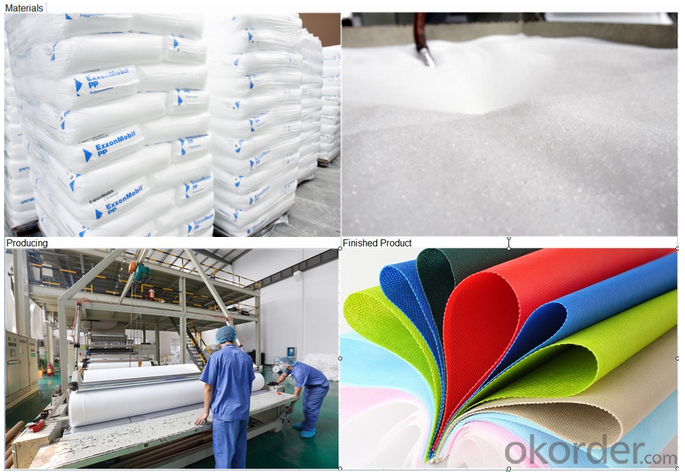
- Q:From the yarn to the finished textile fabric production process is how
- Fabric mercerizing: refers to the cotton fabric in the case of tension, after the treatment of concentrated caustic soda, so that fabric gloss better, more crisp, better shape. Commonly known as double mercerizing fabric complete process: cotton spinning → combing → yarn singeing → yarn mercerizing → yarn twisted → fixed color, soft, twisted after the formation of mercerized cotton yarn → yarn forming the fabric → fabric dyeing (if the early yarn is not dyed) → fabric mercerizing → fabric pre-shrink, stereotypes → the formation of double mercerized cotton fabric, cloth can be clothing
- Q:Textile machine, I should use single-phase power or three-phase electricity
- Production capacity and what kind of relationship you use it, and your productivity and equipment utilization relationship is quite big, the motor is not that, but I feel with three-phase motor will be more convenient (if you want to reverse the words One-way will be more trouble than the three-phase)
- Q:What is the textile project
- Graduates of textile engineering can generally work in the technical and business management departments of textile enterprises in the process design, production management, product development and other work, to the business and foreign trade and other departments engaged in business management and professional foreign trade work, but also in scientific research units, Textile schools engaged in scientific research, teaching work.
- Q:Mechanical characteristics of textile machinery
- The continuity of textile machinery is subject to the process. For example: spinning 20.8 ~ 27.8 cotton yarn, from cotton to spinning the total draw ratio of 13900 ~ 19000 times. The process needs to go through the cleaning of cotton, carding, parallel, roving, spun yarn and other processes, it must be distributed in the process of the corresponding equipment to complete.
- Q:The difference between double distribution and processing in textile fabrics
- Distribution - that is, you buy fabrics, only the money on the line, all of them will give you a good job.
- Q:China textile products do not how points? What kind of?
- Industrial chain long, professional market developed. Jiangsu, Zhejiang and Shanghai region has formed from the textile raw materials, fabric weaving to dyeing and finishing, clothing production longer textile industry chain, the upper and middle and downstream products rich and varied. The textile industry has a high degree of marketization and professional market network.
- Q:Application of Biological Enzyme in Textile Processing
- Extremely affecting the spinnability of the fiber, hemicellulase and ligninase can be used to remove hemicellulose and lignin, but hemicellulase and ligninase are not used alone in the textile process, mainly And other enzyme preparations (if the gelase, cellulase, etc.) with the fiber treatment
- Q:Cotton chemical fiber textile, hemp textile, wool textile, silk silk textile industry, the difference between the four
- From the 1998 cotton management system reform, to fully liberalize the cotton purchase and marketing market in 2004, China's cotton industry has entered a new stage of development.
- Q:What is the use of polyurethane TPU hot melt adhesives in textiles?
- To tie on behalf of sewing can greatly reduce the labor intensity of clothing, and the production of fine clothing, fit, strong and solid. Hot melt adhesives used for fabric paste mainly polyamide, polyurethanes and polyurethane and the like.
- Q:Performance requirements for textile fibers
- The wear resistance of the fiber is related to the macromolecule structure, supramolecular structure, elongation at break and elasticity of the fiber. The order of common fiber wear resistance is as follows
1. Manufacturer Overview |
|
|---|---|
| Location | |
| Year Established | |
| Annual Output Value | |
| Main Markets | |
| Company Certifications | |
2. Manufacturer Certificates |
|
|---|---|
| a) Certification Name | |
| Range | |
| Reference | |
| Validity Period | |
3. Manufacturer Capability |
|
|---|---|
| a)Trade Capacity | |
| Nearest Port | |
| Export Percentage | |
| No.of Employees in Trade Department | |
| Language Spoken: | |
| b)Factory Information | |
| Factory Size: | |
| No. of Production Lines | |
| Contract Manufacturing | |
| Product Price Range | |
Send your message to us
polypropylene non woven fabric/Bubble Non woven Fabric roll/PP non woven fabric
- Loading Port:
- Shanghai
- Payment Terms:
- TT OR LC
- Min Order Qty:
- 1000 roll
- Supply Capability:
- 10000 roll/month
OKorder Service Pledge
OKorder Financial Service
Similar products
New products
Hot products
Hot Searches
Related keywords
